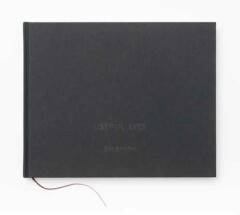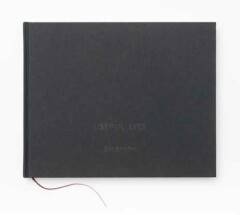
- Afhalen na 1 uur in een winkel met voorraad
- Gratis thuislevering in België vanaf € 30
- Ruim aanbod met 7 miljoen producten
- Afhalen na 1 uur in een winkel met voorraad
- Gratis thuislevering in België vanaf € 30
- Ruim aanbod met 7 miljoen producten
Zoeken
Omschrijving
By using an older form of technology, French artist Éric Antoine strips away modern-day conceits in the quest for simplicity, solitude, and core truths. The works speak to the passage of time but also to a sense of timelessness. Useful Lies brings together several series among the last he produced. Aside from a single cardboard box in Les Intrus - a series that highlights the human body and the fragility of shelter - nothing in the photographs dates them. And yet, his framing and cropping are entirely modern, subverting any suggestion of nostalgia. These are not attempts to replicate nineteenth-century photographs but rather forays into unchartered territory that use the past to draft new stories.
The collodion process also helps visually convey the feeling of being caught between two forces: the drive toward perfection and the desire to embrace flaws. More specifically, Antoine is drawn both to German New Objectivity of the 1920s, with its rejection of Expressionism, and to the movement known as pictorialism. His medium dovetails with his interest in New Objectivity by allowing for great precision and very fine detail. At the same time, the process is highly pictorial in that the artist essentially paints the glass plate with a sensitive coating, which pools and drips and must be controlled. This tension between exactitude and imperfection opens up the works, creating scenes that are both true to nature and evocative of their own realities.
The collodion process also helps visually convey the feeling of being caught between two forces: the drive toward perfection and the desire to embrace flaws. More specifically, Antoine is drawn both to German New Objectivity of the 1920s, with its rejection of Expressionism, and to the movement known as pictorialism. His medium dovetails with his interest in New Objectivity by allowing for great precision and very fine detail. At the same time, the process is highly pictorial in that the artist essentially paints the glass plate with a sensitive coating, which pools and drips and must be controlled. This tension between exactitude and imperfection opens up the works, creating scenes that are both true to nature and evocative of their own realities.
Specificaties
Betrokkenen
- Auteur(s):
- Uitgeverij:
Inhoud
- Aantal bladzijden:
- 196
- Taal:
- Engels
- Geïllustreerd:
- Ja
Eigenschappen
- Productcode (EAN):
- 9782490952212
- Verschijningsdatum:
- 10/12/2021
- Uitvoering:
- Hardcover
- Afmetingen:
- 305 mm x 246 mm
- Gewicht:
- 1310 g

Alleen bij Standaard Boekhandel
+ 130 punten op je klantenkaart van Standaard Boekhandel
Beoordelingen
We publiceren alleen reviews die voldoen aan de voorwaarden voor reviews. Bekijk onze voorwaarden voor reviews.











